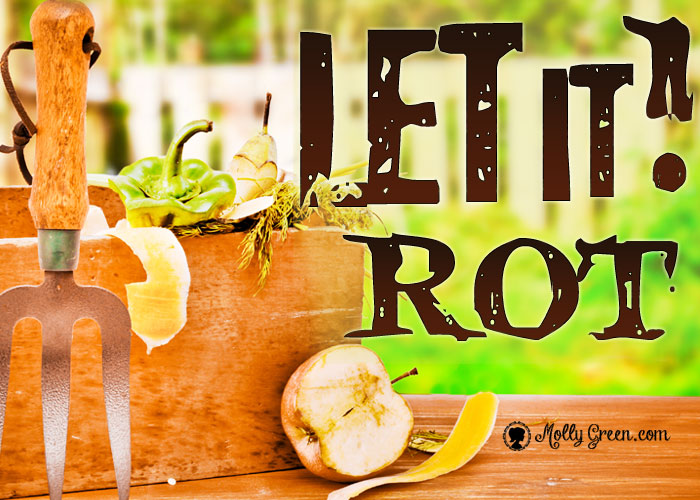One of the coolest recycling tricks that Mother Nature offers is the ability to take organic, compostable items that have died and change them into nice, friable soil, full of micronutrients and fertility. This often-overlooked substance can then support and feed many plant species and give them their best opportunity for successful growth. Helping Mother Nature along can range from incredibly simple to the most complex of scientific endeavors. Compost is, ironically, really all about what you put into it—literally and metaphorically. In this article, I walk you through how to build and maintain an effective compost pile as well as the many benefits of composting.
How does Composting Work?
In its simplest form, composting can be done by heaping organic items, leaves, non-colored newsprint, egg shells, vegetable peelings, grass clippings, coffee grounds, and even tea bags into a pile and leaving to rot. As long as the pile is damp and has a bit of air circulating around, worms, microbes, and other friendly decomposers will slowly break down all of the compostable bits into their component parts and effectively turn them into healthy soil conditioners. Many old timers know that when you pile up your fallen leaves over the years in the same place, you will create a great place to check for fishing worms! Those worms are happy to help break down the slowly rotting leaves and are also available for catching some dinner. Just another one of the benefits of composting!
Putting Your Compostable Items in Containers
In a more formal sense, a container, either purchased or homemade, can be utilized to keep the pile manageable and neater in appearance. The optimal size for a home pile is around three feet high and wide in all directions. Pallets can be used to enclose a good space, as can a round of chicken wire or hardware cloth. Homesteaders can be as detailed as they like with their compost bins, keeping in mind that three to four feet is optimal size for speed of decomposition.
Ideally, alternating layers of “brown” or carbon-based compostable items like leaves or twigs with layers of “green” or nitrogen-releasing items like carrot tops, egg shells, or vegetable trimmings when forming the pile will help it to break down quickly, allowing nature’s decomposers to have access to both types of materials at all times.
Speeding Up the Composting Process
After the pile is built, it helps to speed the process along by mixing up the contents. This can be done by using a pitchfork to lift and turn the items, mixing the outside items into the middle and allowing air to mix throughout the dampened pile. You can also fork the items into an adjoining container or bin to aid in this. With a wire enclosure, simply lift it over the top of the pile and place it beside the original pile and replace the items within the wire, dampening as you go, if needed.
Of course, Mother Nature doesn’t really need our help. She can, and will, take care of breaking down items without our intervention, just at a bit slower pace.
There are Many Benefits of Composting!
When the items in your pile smell and appear like good black dirt, you may sift out any large bits that need to continue to break down, and let the dirt rest for a couple of weeks before applying as a mulch or mix into planting beds as a fertilizer and soil conditioner that is the perfect addition to your flower and vegetable gardens.
Compost is a simple and effective way to save money on fertilizers and mulch, grow food organically, rid your homestead of unwanted organic materials. Other benefits of composting are that you can even help the environment by keeping items out of the waste stream and avoiding an unnecessary reliance on commercial fertilizers.
You simply can’t beat Mother Nature at her own game!
Jan Hatchett is a Christian wife and homeschooling mom of two amazing sons. She enjoys log cabin living, writing, quilting, crafting, sewing, reading, and horseback riding. For more of Jan’s exploits, check out: www.anotherhatchetjob.wordpress.com.
Have more compost than you know what to do with? Consider giving it to a neighbor! And be sure to check out our article on neighbors helping neighbors.






Just bought a compost bin a few months ago. Look forward to good compostfor veggies.
Mrs. Hatchett nature does not have a mother.
Thank you for your comment. We are sure Mrs. Hatchett was just using a figure of speech, not making a doctrinal statement. Best wishes and thank you for reading!